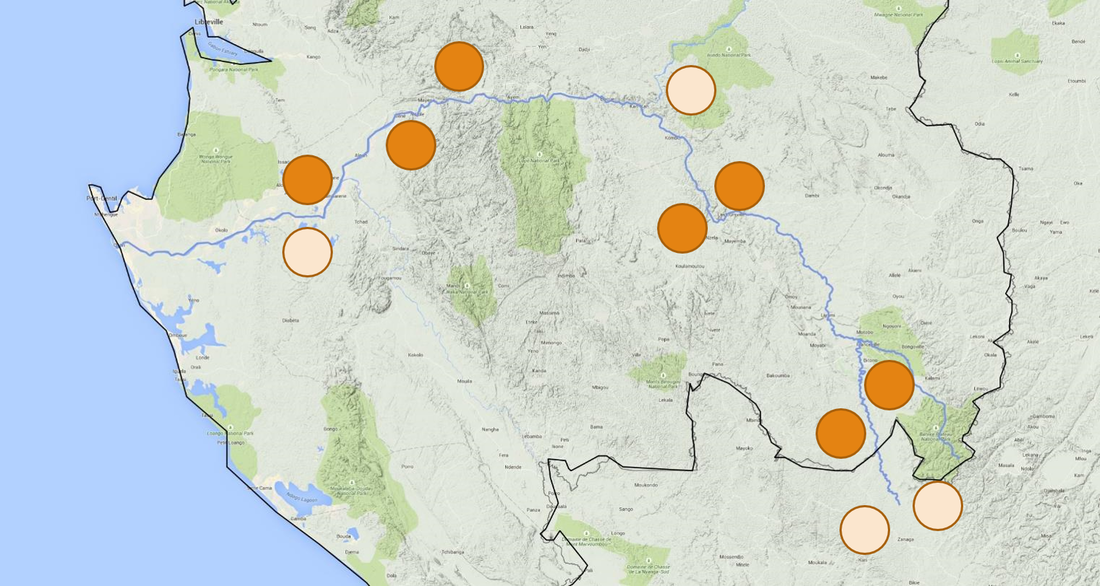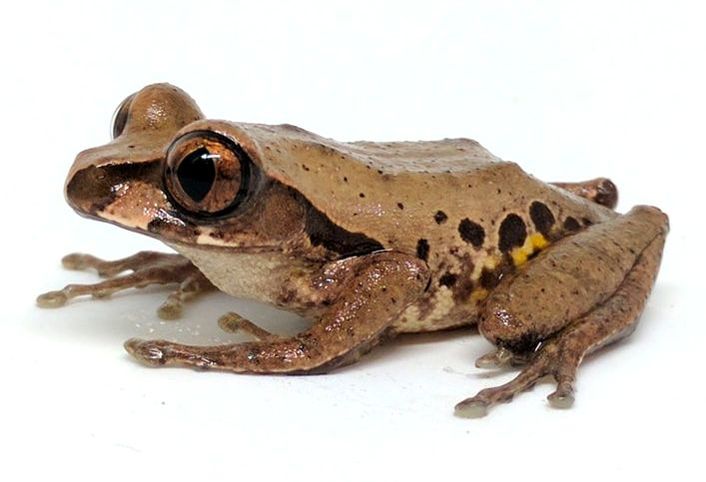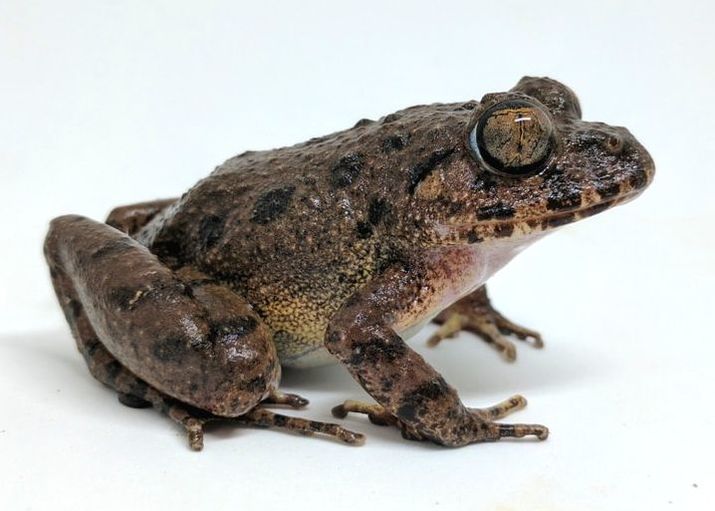Riverine Barrier Hypothesis
Ogooué River, Gabon

For my PhD I want to bridge cutting-edge molecular and modeling methods to test classic biogeographic questions about speciation in the tropics. For my first project I intend to test the Riverine Barrier Hypothesis (RBH) first proposed by Wallace in 1852 to explain
patterns of primate diversity in the Amazon1. The Ogooué River in western Central Africa, is widely appreciated as an important biogeographic barrier for several groups of animals, including primates, small mammals and reptiles 2–4. Unfortunately, these studies have relied on limited sample sites or focused on single species. In order to fully understand the influence of the Ogooué River it is important to sample a diversity of co-distributed species across the entire river. Taking a comparative phylogeographic approach, I will collect ddRADseq data for eight co-distributed frog species around the Ogooué River. I collected specimens and tissue samples for these eight focal species during an expedition to Gabon in 2015 (Fig I).
If the Ogooué River is responsible for driving diversification in Central Africa we expect to observe support for a shared history diversification11 scenario. Under this model of diversification, both the geographic structure and lineage diversification events through time are concordant. The hypothesis assumes that species diversify in response to a vicariant event (i.e. formation of rivers) that simultaneously affect co-distributed species. I predict, however, that populations are mixing around the headwaters of the Ogooué and that rivers are mainly responsible for driving population structure in the region and not full speciation. Another potential driver of diversity in the Afrotropics are Pleistocene forest refugia.
patterns of primate diversity in the Amazon1. The Ogooué River in western Central Africa, is widely appreciated as an important biogeographic barrier for several groups of animals, including primates, small mammals and reptiles 2–4. Unfortunately, these studies have relied on limited sample sites or focused on single species. In order to fully understand the influence of the Ogooué River it is important to sample a diversity of co-distributed species across the entire river. Taking a comparative phylogeographic approach, I will collect ddRADseq data for eight co-distributed frog species around the Ogooué River. I collected specimens and tissue samples for these eight focal species during an expedition to Gabon in 2015 (Fig I).
If the Ogooué River is responsible for driving diversification in Central Africa we expect to observe support for a shared history diversification11 scenario. Under this model of diversification, both the geographic structure and lineage diversification events through time are concordant. The hypothesis assumes that species diversify in response to a vicariant event (i.e. formation of rivers) that simultaneously affect co-distributed species. I predict, however, that populations are mixing around the headwaters of the Ogooué and that rivers are mainly responsible for driving population structure in the region and not full speciation. Another potential driver of diversity in the Afrotropics are Pleistocene forest refugia.
Historical Forest Refugia
Chaillu Massid, GabonThe two central competing hypotheses to explain vertebrate diversification in the tropics are the River Barrier Hypothesis (RBH) and the Forest Refugia Hypothesis (FRH). The RBH derives from observations that many terrestrial vertebrate species in the tropics have allopatric distributions abutting large rivers, and posits that such aquatic networks serve as barriers to gene flow, leading to genetic differentiation among populations and eventually speciation7. The rivers of Central Africa appear to be important barriers for several species of vertebrates8,9. In contrast, the FRH predicts that global fluctuations in climate during the Pleistocene drove cyclical isolation of forest refugia via the expansion and contraction of savanna habitat, leading to isolation of vertebrate populations and allopatric speciation3,6,10 (Fig. 2a).
In 2017, I sampled populations at a large forest refugium, the Chaillu Massif in southern Gabon (Fig. 1). These data will be supplemented with additional samples deposited at museum collections. To date I have extracted and quantified tissue samples for seven co-distributed species and these will be ddRAD sequenced at Matthew Fujita lab at UT Arlington. With funding from SSE I will be able to collect additional samples from the Batéké Plateau. This will strengthen this project significantly as this plateau provides a unique opportunity for testing the RRS hypothesis because two river tributaries (Congo and Ogooué) meet within a single postulated forest refugium. |
Riverine Refugia Scenario
|
One potential and unexplored source of forest refugia, are river tributaries, as they provide stable habitat during dry periods and are often associated with extensive topological relief. I propose to explore the role tributary forests play as drivers of diversification based on (a) the presence of gallery forests surrounding the headwater tributaries of the Ogooué River within savanna habitat and (b) detection of genetic differentiation of frog populations within a single postulated forest refugium, correlating with different watersheds (preliminary data not shown). I refer to this scenario as the river-refugia scenario (RRS; Fig. 2b). I will employ demographic modeling to test relative likelihood each biogeographic scenario.
|
Genetic/Demographic Model Predictions:
|



